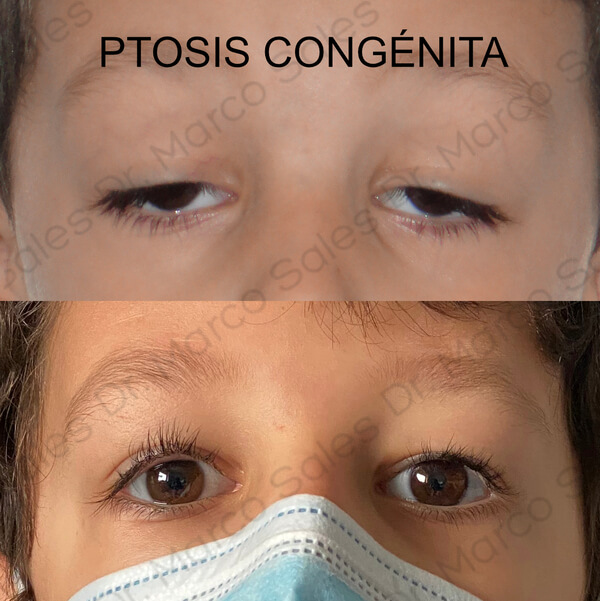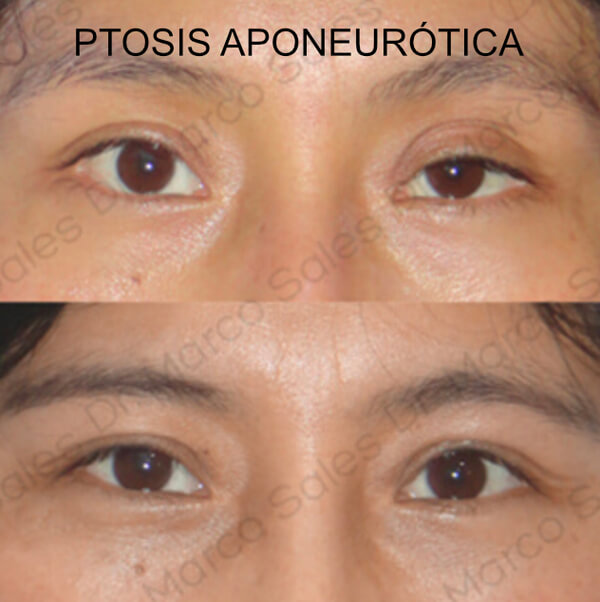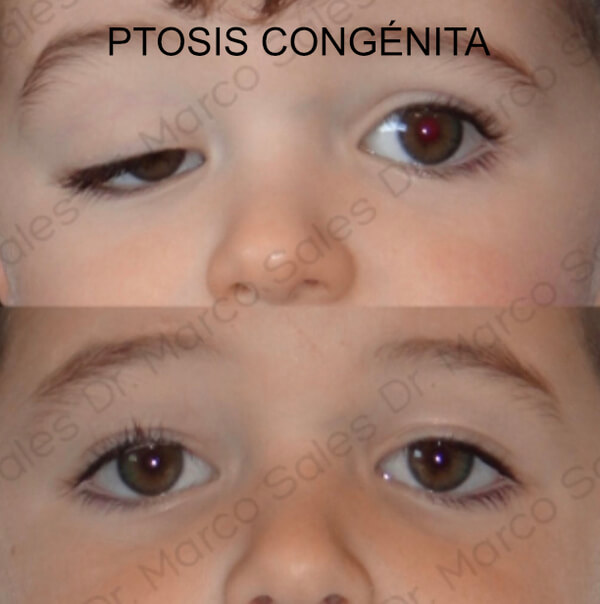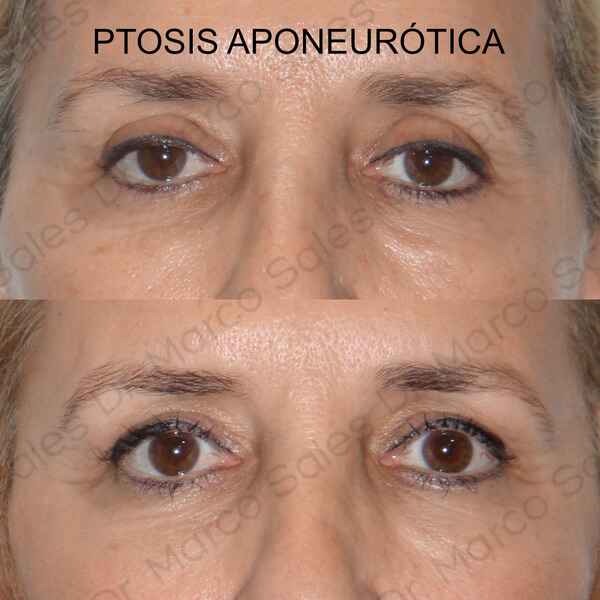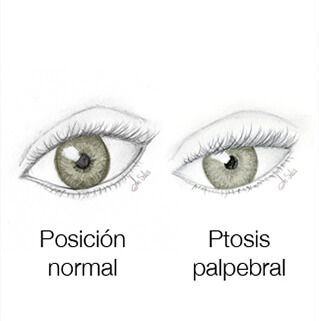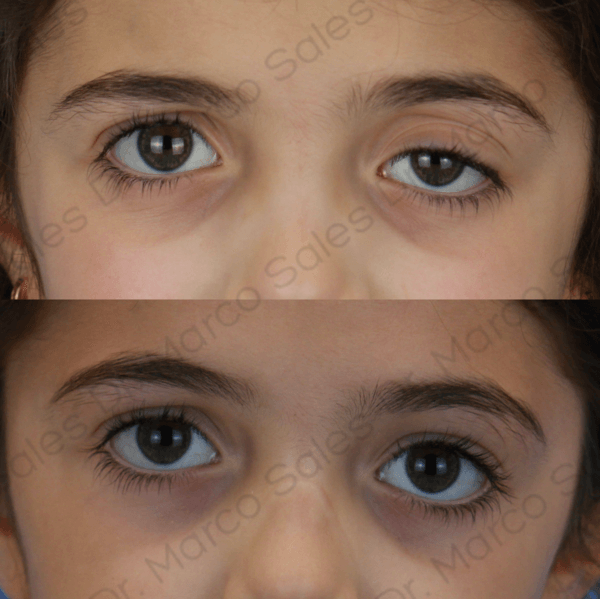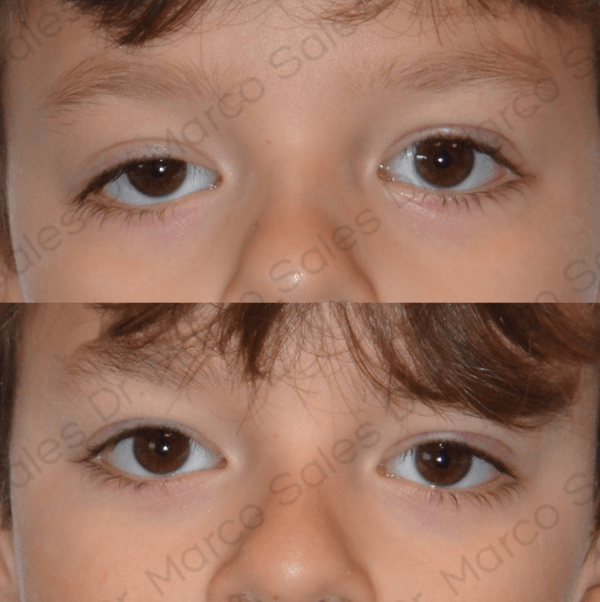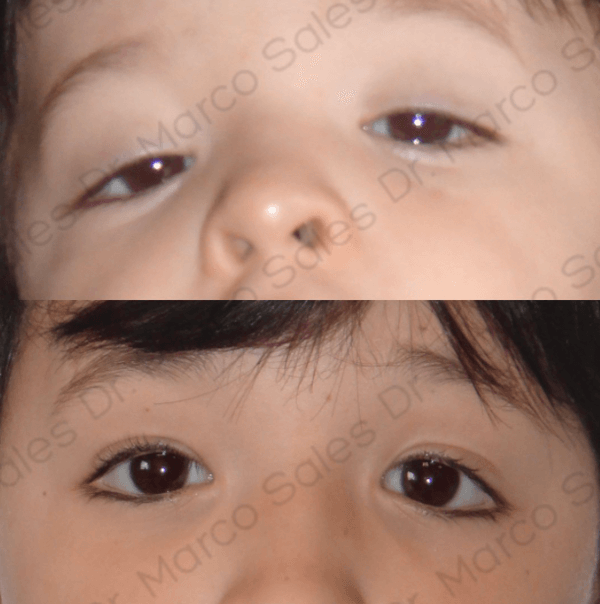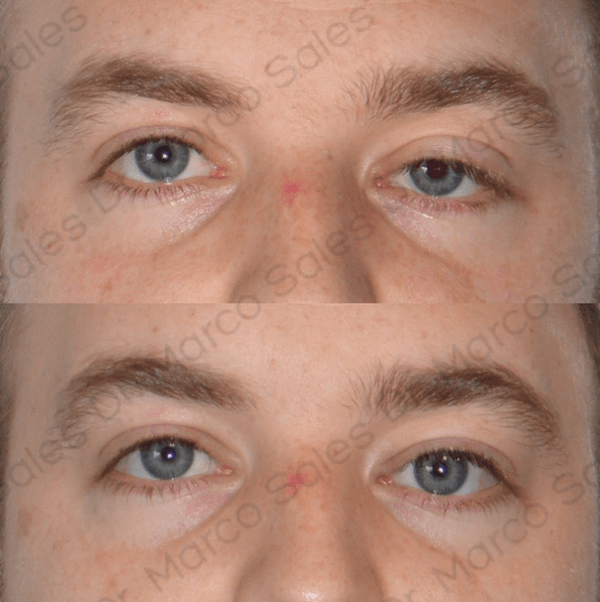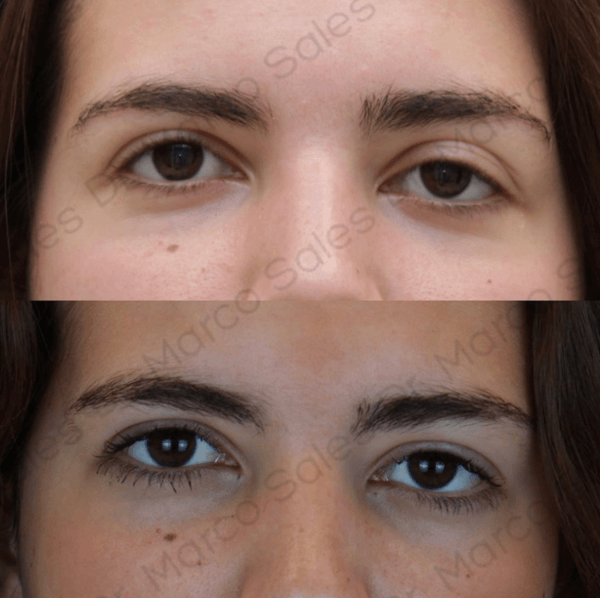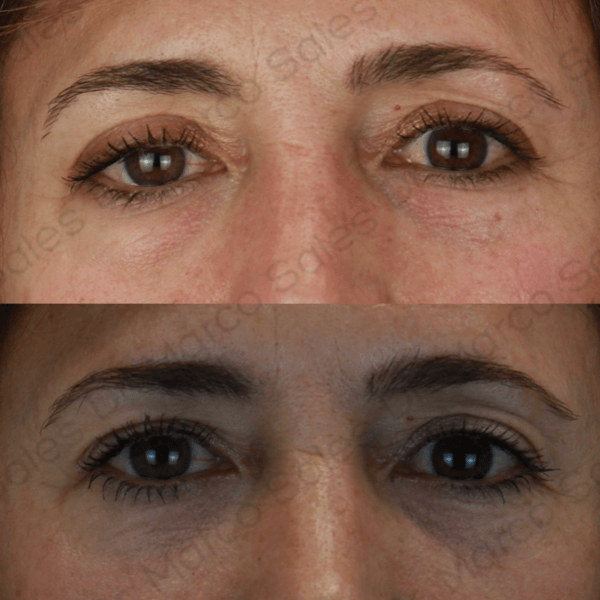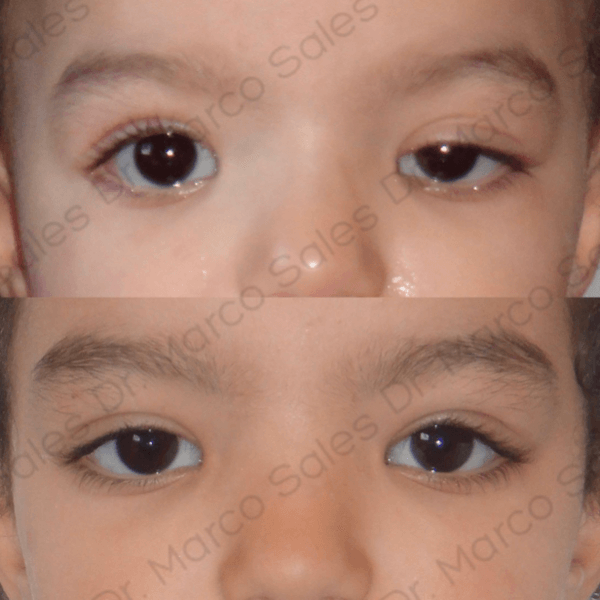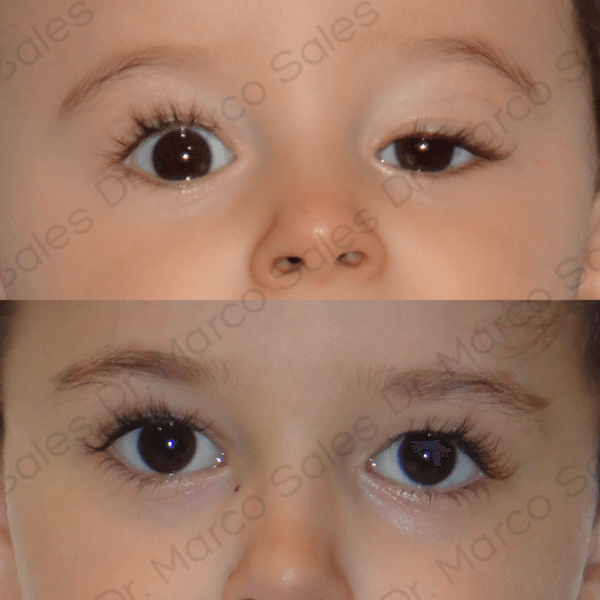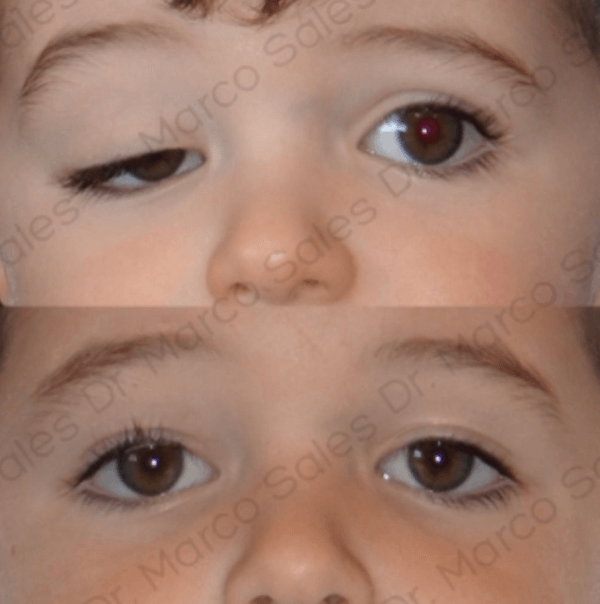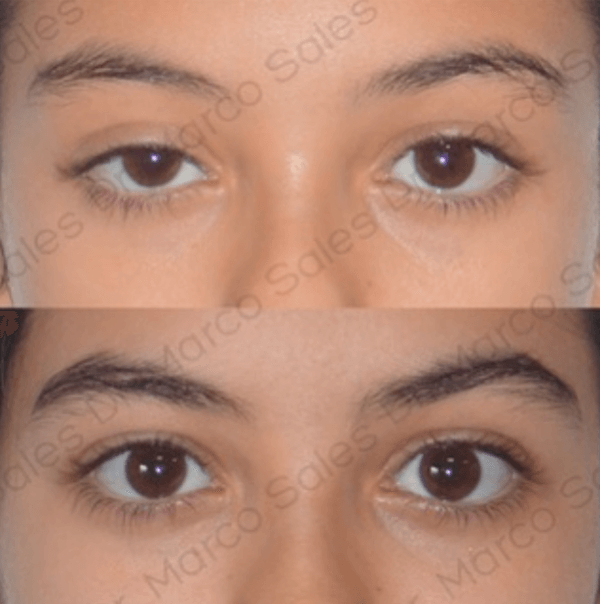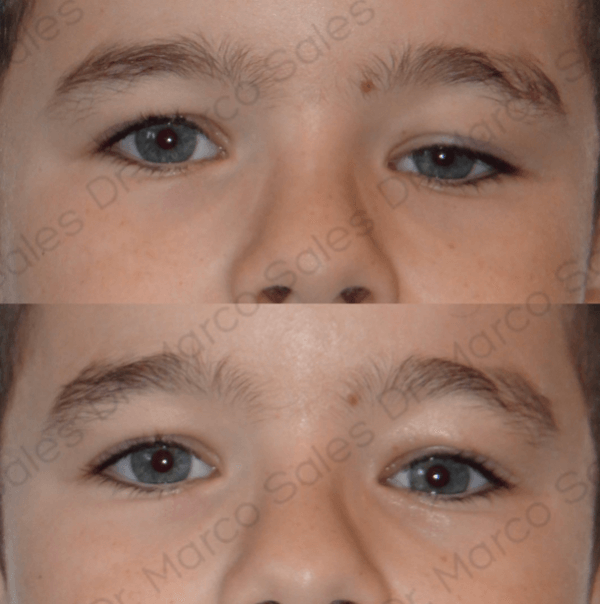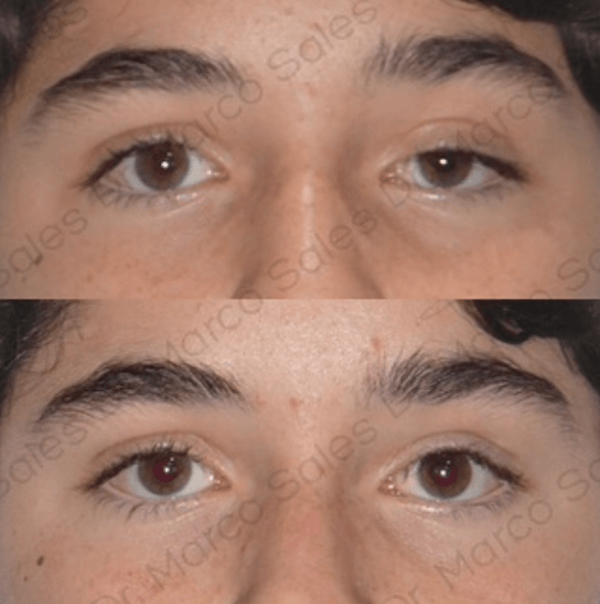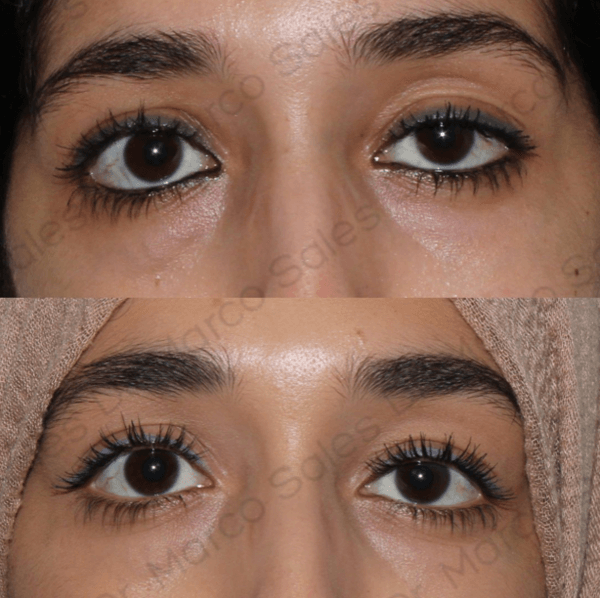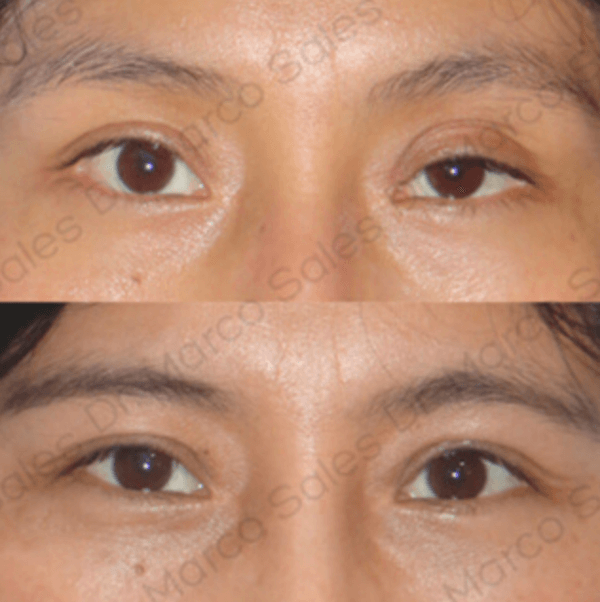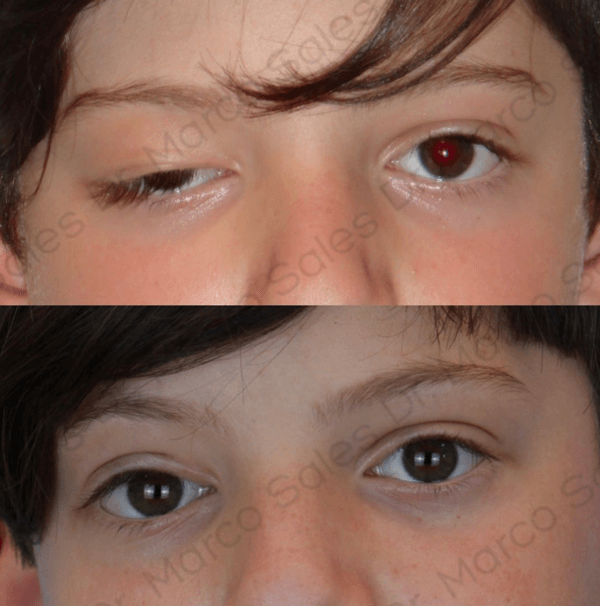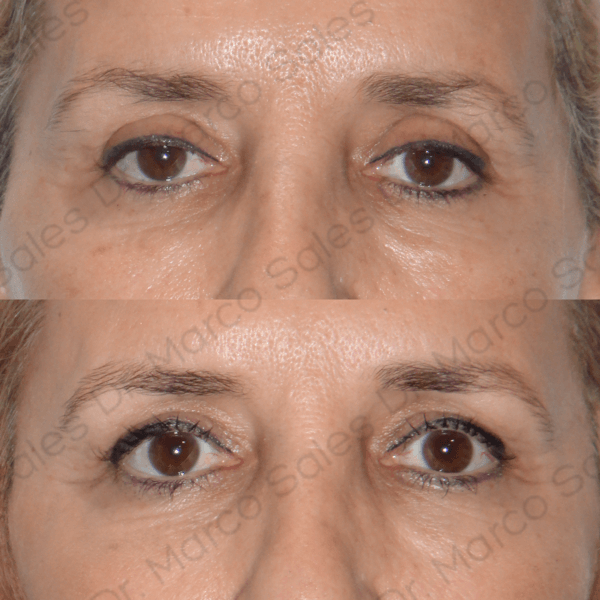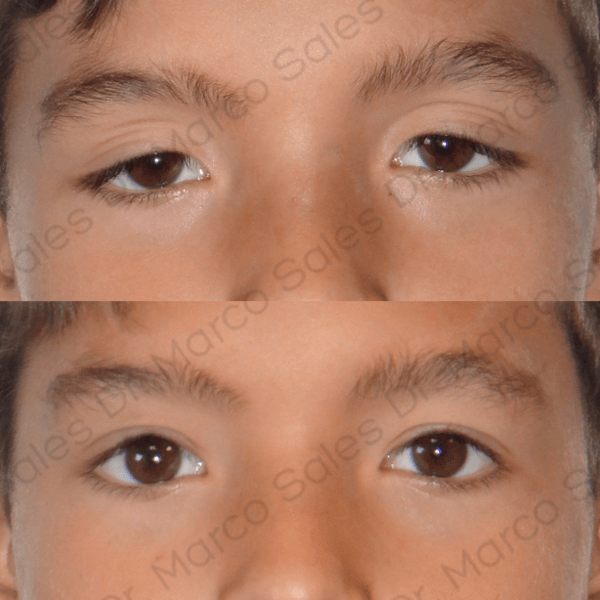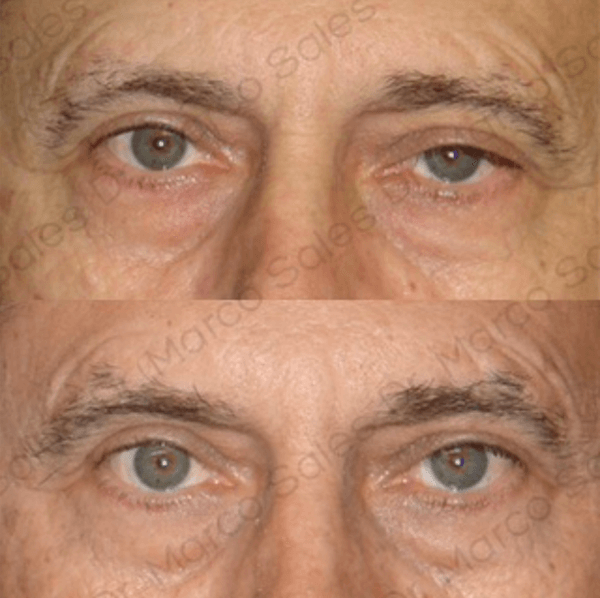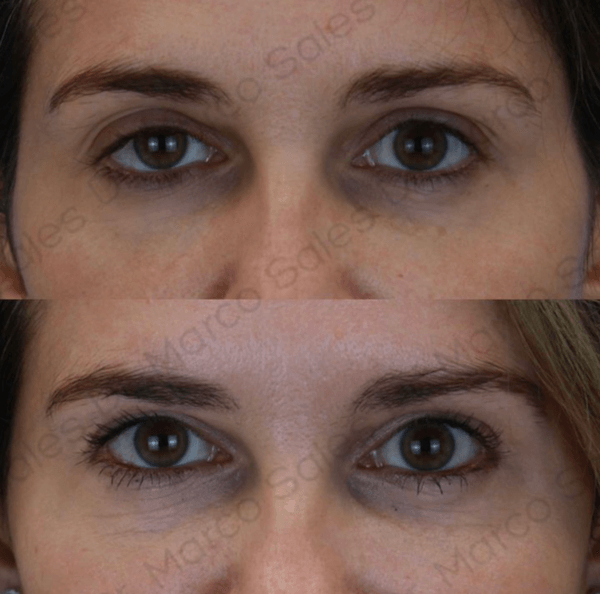Drooping of the upper eyelid (eyelid ptosis) is a very common reason for consultation. It can occur at any age throughout life. In general, the consultation is usually for cosmetic reasons, but on some occasions, it can cause loss of vision due to partial or total obstruction of the field of vision. It can also cause tiredness or pain in the forehead, due to the attempt to compensate for the drooping of the eyelids by raising the eyebrows.
The first thing to rule out is that the eyelid is not really drooping, and that what the patient notices is the excess skin that occurs with ageing, which is corrected with a blepharoplasty. On other occasions, what happens is a drooping of the eyebrow, which also produces an asymmetry in the gaze, which the patient usually notices as if “the eyelid is drooping”.

